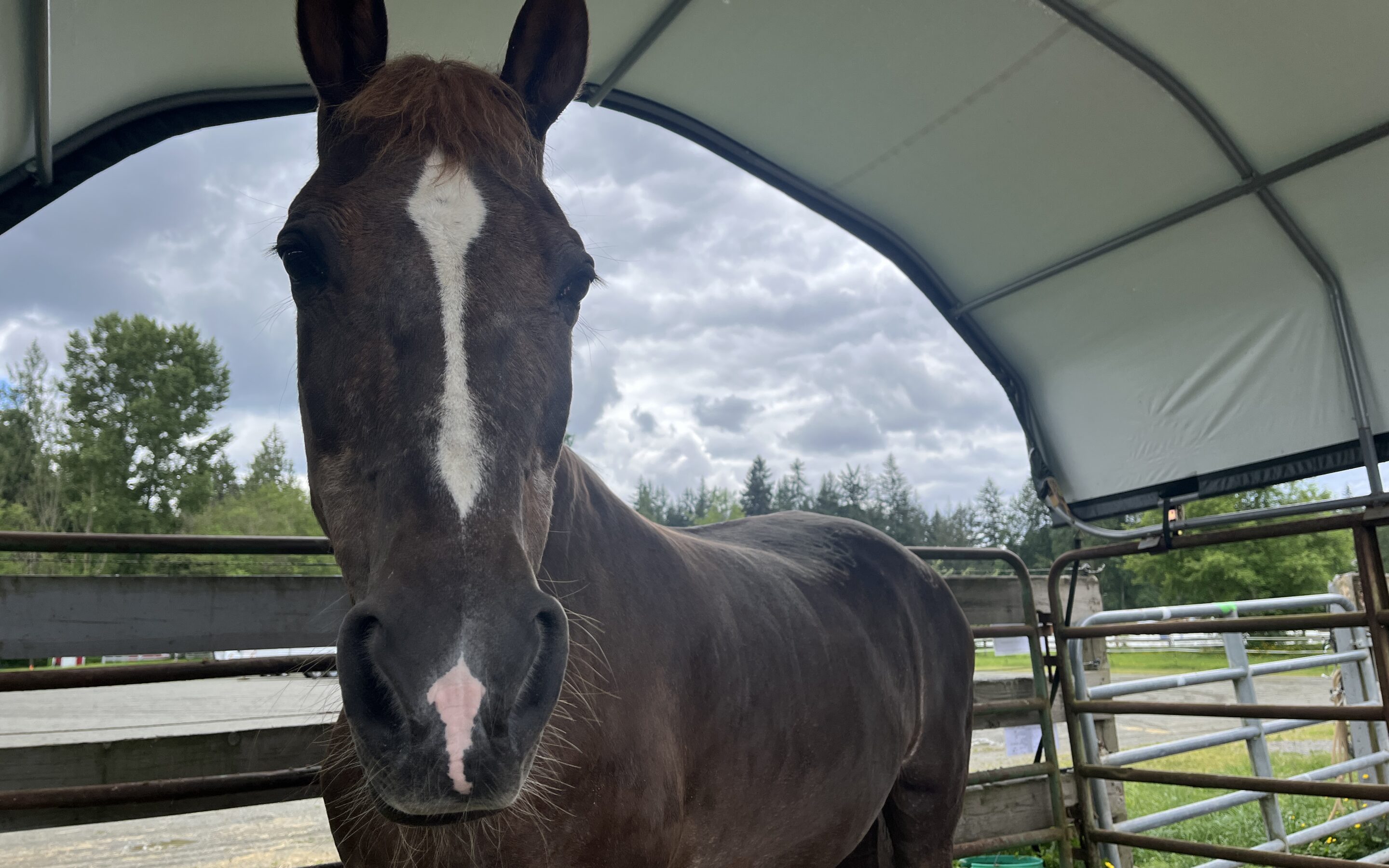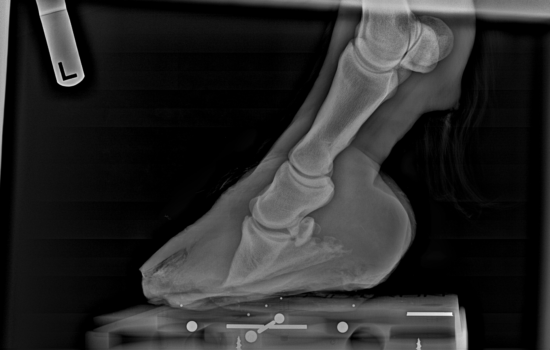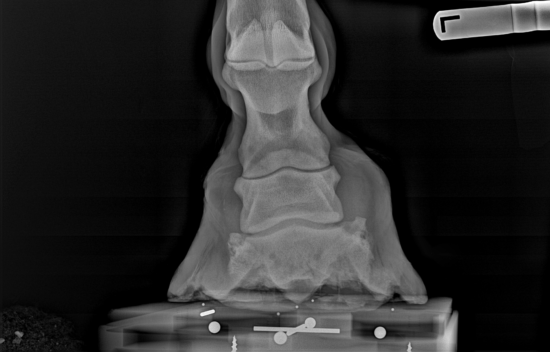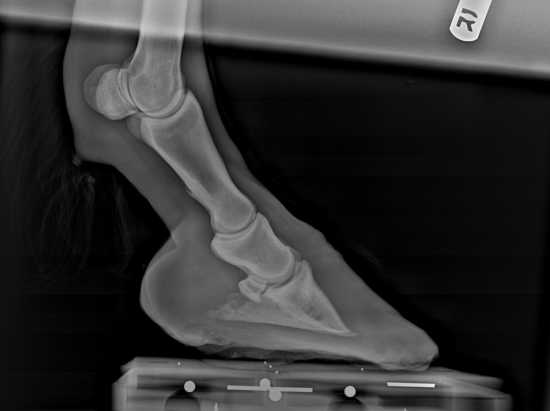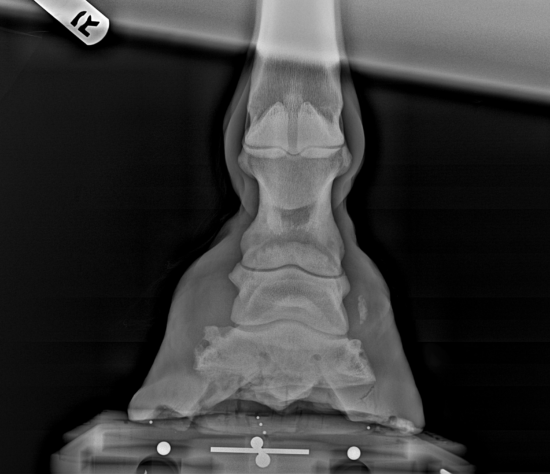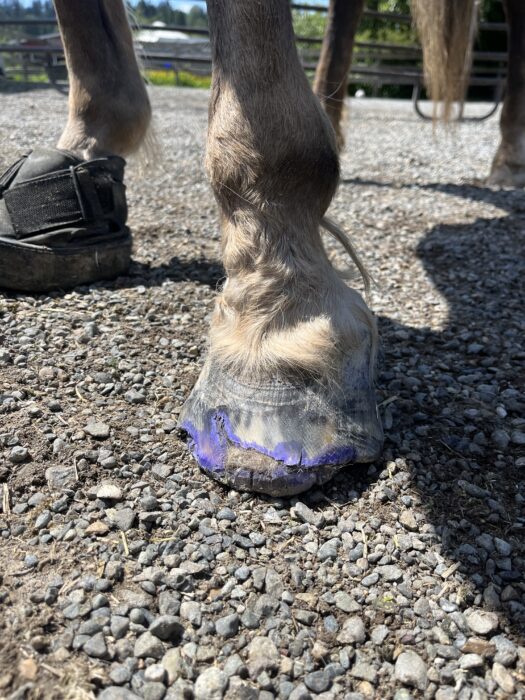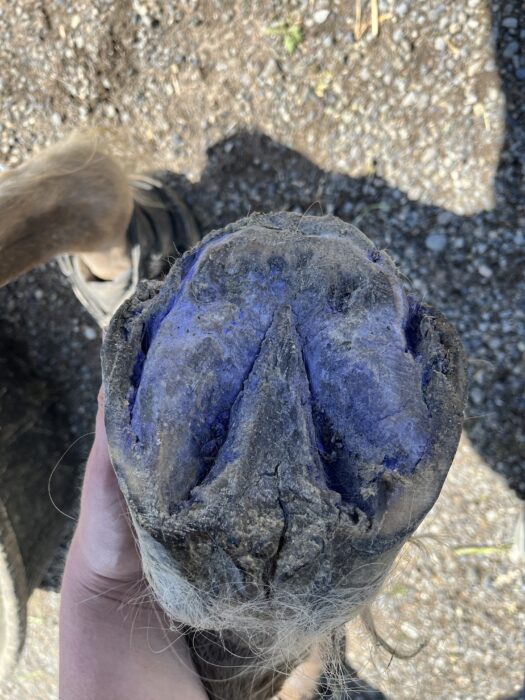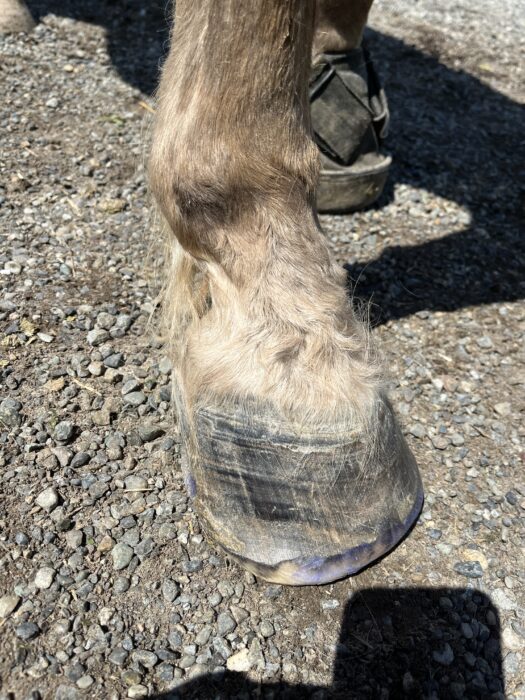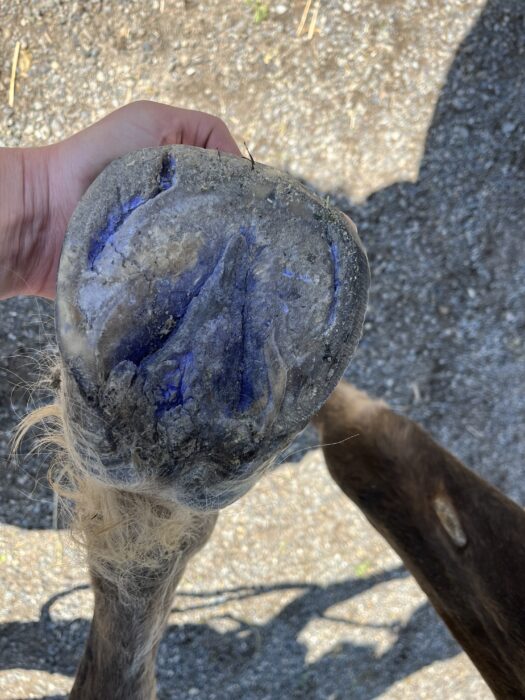The horses who arrive at SAFE are rarely in good shape. But the amount of rehabilitation each horse requires is as varied as the horse themself. Bailey arrived as part of a four horse seizure from Pierce County Animal Control. We have spoken before about what an amazing job PCAC does at beginning the rehab process for the horses who come into their care, and this group was no different. They were nearly unrecognizable from the emaciated and neglected animals who were first seized back in March of 2024. Before she even got to SAFE, Bailey and her group had amassed pages of vet reports, having been carefully monitored and checked up on many times by the folks down at Tacoma Equine. But despite having gained back most of the weight she so badly needed, and having had her other basic (and some not so basic) care needs tended to, Bailey arrived with one ongoing health issue: the condition of her hooves.
Bailey was seized with hooves that the vets described as ‘severely overlong.’ She was lame at the walk at that time, and this lameness continued even after her initial trim. She was placed on a daily dose of the anti-inflammatory medication Equioxx, and was put in a pair of soft ride boots to help with her comfort level. The boots did help to a degree, but the lameness was still present. Subsequent X‑rays of her hooves revealed both fronts displaying signs of chronic laminitis, the right front with 2 degrees, and the left front being significantly worse, with ‘severe rotation’ (<8 degrees) of the coffin bone. The sole on that hoof was also very thin, and she had significant white line separation on both feet. In the soft rides and with the Equioxx, she remained comfortable enough, but with such dramatic changes to the anatomy of the hoof, comfort is a relative term.
- Left Front
- Left Front
- Right Front
- Right Front
Bailey continued to see the farrier every four weeks to help keep on top of the reconstruction of that left front especially. There was a great deal of dead lamina beneath the hoof wall that was requiring removal, and the vet’s suggestion was to bring the heel down significantly in order to help reshape the hoof around the rotation beneath the surface. Though the hooves she walked into SAFE with looked far from perfect, they were hugely improved from where they began.
- Left Front
- Left Front
- Right Front
- Right Front
We continued Bailey’s daily regime of Equioxx, and kept her in the soft ride boots, checking them daily for debris and rocks – doing what we could to help how we were able despite her lack of soundness.
Then about a week after her arrival, we came out to find Bailey standing in her paddock extremely reluctant to move, with elevated respirations and a heart rate hovering around 60 – abnormally high. She also had a bounding digital pulse in that left front, all signs that pointed to pain. We had our vets out to assess, and they recommended we take her off Equioxx and put her on bute, a stronger option, for a few days.
We also had her seen by our farrier, who continued the work that had been started to reshape that left front hoof. The other hooves were not without their issues, including old abscess tracks and white line separation, but the left front is above and beyond the most worrisome. Her professional opinion is that it will take a great deal of time for the hoof to make a recovery, and again, when discussing laminitic changes, ‘recovery,’ like comfort, is a relative term.
Now, on bute and still in the boots, Bailey no longer has the same bounding pulse in that left front that she did, nor the same level of elevated vitals, but she still is off on that left front at the walk, and her heart rate remains on the high side of normal, which is an indication of a level of discomfort. Living on bute is not a sustainable option, but in the interest of her comfort we are keeping her on it for the time being. We are keeping a close and careful eye on Bailey, and keeping in regular touch with our vets, to ensure that we are doing what we can to help her in the capacities in which we are able. Bailey may not have perfectly aligned coffin bones, but what she does have is a large group of people who love and care about her, and have her well-being at the forefront of our minds.

